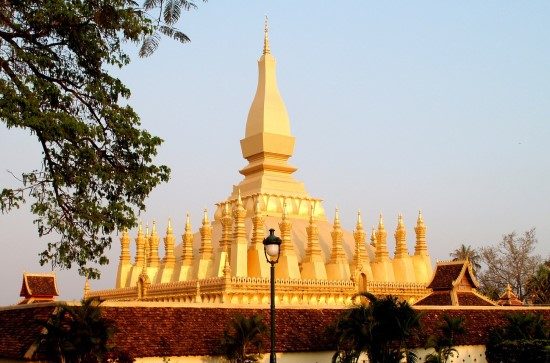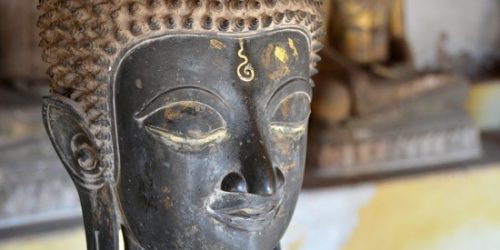Menu
Touted as the most laidback capital in Southeast Asia, Vientiane, with some 800,000 inhabitants, is a world away from the rest of the country. With an eclectic mix of colonial-French buildings and ancient temples, Vientiane captivates travelers with its peaceful riverside atmosphere and leafy boulevards. Breathe the tranquility while strolling along the Mekong River, where locals flock to relax and enjoy the sunset hours. Whether you spend your days here lounging in a chic bar by the river or shopping in exotic shops and vibrant night markets, once you leave you will miss this place more than expected.
The golden Pha That Luang or “The Great Stupa”, is the most important monument in Laos, symbol of the Buddhist religion and of Laos’ national sovereignty. Legend has it monks from India founded the temple here in the 3rd century to house a piece of Buddha’s breastbone. Since then, it has been rebuilt several times. Each level of the Pha That Luang has different architectural elements that summarize Buddhist architecture, the material world being represented by its outer part.
Built between 1962 and 1968 in memory of those who died in Laos’ war of independence from France, Patuxai (pictured in banner) is a Laotian-style building, with typical ornamentation and bas-reliefs on its walls. It is reminiscent of the Parisian Arc de Triomphe. From the top you can enjoy a beautiful panoramic view over Vientiane, as well as see the gardens and ponds that surround it.

Restored in 1930, Wat Si Saket, is a temple built in the early 19th century by the last king of Vientiane, Anouvong. The temple is known for housing some 10,000 Buddha figures. It is said that it is the only temple in the city that maintains its original construction since it survived the occupation of the Siamese army that burned the city in 1827. Its main building, the sim, draws attention for its five-level roof adorned with images of Naga, deities of Buddhist culture, shaped like a snake.
It is said that a pregnant young woman named Si Muang offered herself as a sacrifice to the city’s guardian spirit and jumped into the hole where a stone pillar, lak meuang, was placed during the construction of this temple in Khmer times. Wat Si Muang is a Buddhist temple with two rooms, the largest, where there is a copy of the famous Emerald Buddha. Local lore says that if you make a wish to the Buddha and it is granted, you must return here with an offering, either of food or money. The second room houses the pillar mentioned in the legend wrapped in a sacred cloth.
Xieng Khuan or Buddha Park is a park with a strange collection of Buddhist figures, deities, and monsters. It was built in 1958 by Luang Pu Bunleua Sulilat, a kind of shaman or mystic who fled the country to Thailand shortly before the 1975 revolution, where he built another similar park. It is located about 25 km from Vientiane, very close to the Thai border, near the Friendship Bridge and along the Mekong River. At present it is a bit abandoned, but it is worth visiting because of its bizarre figures.

Spend an evening exploring the Vientiane Night Market on this culinary excursion. After a convenient hotel pickup, experience this bustling open-air market on the banks of the Mekong River with a knowledgeable local guide. Get an insider’s view on the best food spots, enjoy an authentic complimentary dinner, and kick back with a cold Beer Lao.